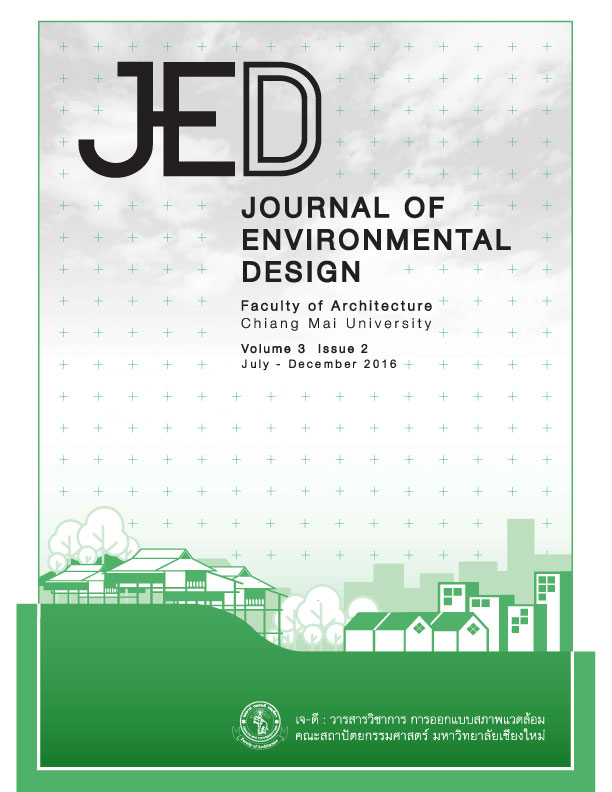พลวัตของสถาปัตยกรรมพื้นถิ่นไท กรณีศึกษาเรือนไทลื้อ และเรือนไทใหญ่ (Dynamic of Tai vernacular architecture, case studies of Tai lue and Tai Yai houses)
Main Article Content
บทคัดย่อ
บทความนี้อภิปรายเกี่ยวกับพลวัตของสถาปัตยกรรมพื้นถิ่นไทโดยสังเคราะห์ผลงานวิจัยใน 2 กรณีศึกษาของสถาปัตยกรรมพื้นถิ่นไท คือ ไทลื้อและไทใหญ่ จากชุดวิจัยเรื่องพลวัตของสถาปัตยกรรมพื้นถิ่น โดยมีประเด็นศึกษาร่วมกันคือเพื่อค้นหาพลวัตของสถาปัตยกรรมพื้นถิ่นไทในบริบทเงื่อนไขของพื้นที่ วิธีวิจัยเป็นงานวิจัยเชิงคุณภาพ ด้วยการสำรวจภาคสนามและการสัมภาษณ์กลุ่มตัวอย่างในพื้นที่ศึกษา ผลการวิจัยพบพลวัตความเปลี่ยนแปลง ที่มีที่มาจากรากเหง้าของภูมิปัญญาดั้งเดิมของแต่ละกลุ่ม ผสมผสานกับภูมิปัญญาจากการปรับตัวเพื่อให้เข้ากับสภาพแวดล้อมตามเงื่อนไขของพื้นที่ แม้พลวัตได้ส่งผลให้เกิดความเปลี่ยนแปลงไปของรูปลักษณ์ทางสถาปัตยกรรมที่ปรากฏภายนอก แต่เมื่อพิจารณาแก่นของลักษณะพื้นที่ภายในพบว่า ยังคงมีวิถีความคิดความเชื่อดั้งเดิมปรากฏอยู่ บทสังเคราะห์นี้แสดงถึงพลวัตของสถาปัตยกรรมพื้นถิ่นไทที่สามารถเป็นกรณีตัวอย่างของการศึกษาพลวัตสถาปัตยกรรมพื้นถิ่นในภูมิภาคด้วย
This paper discusses the dynamic of vernacular architecture in two case studies of Tai architecture including Tai Lue and Tai Yai. Two case studies are two researches from a research program about the dynamic of vernacular architecture with a common goal in exploring the dynamic of vernacular architecture in the diverse contexts. Both researches employ qualitative research methods including architectural surveys and interviews. The findings have exhibited the dynamic of changes that combine the indigenous wisdom and the adaptive responses to new conditions. Although the dynamic may bring about changes in external architectural characteristics, the core characteristics of space, ideas and beliefs inside architecture still remain. This paper holistically demonstrates the dynamic of Tai vernacular architecture which could be used as an example for exploring other case studies in the region.


